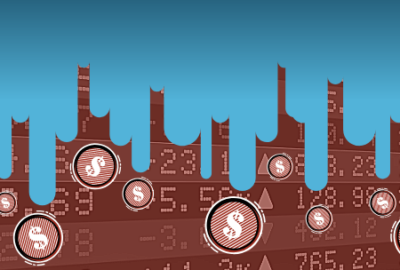
Ukraine: It’s both professional and personal
Invasion prompts all-of-government response, but the effects are personal, too.
Yesterday had a touch of 1930s feel to it. A large industrial nation invades an adjacent neighbor with the objective of annexing it. The pretext for war lives mainly in the mind of a shrewd but megalomaniac strongman elected in dubious elections. But he’ll say anything in an enthusiastic, if cockeyed, speech.
All analogies are flawed, but the astonishing Russian adventure is not just an event that only matters over there. No less than in the pandemic, the response draws in many agencies.
For U.S. federal agencies, it underscores the importance of many efforts that were already underway.
For individuals, the situation has personal consequences. Retirement accounts and the cost of living are under strengthened pressure in the wrong direction. The scramble for energy and the potential for greater energy sanctions adds to inflation. And the market’s uncertainty makes Thrift Savings Plan and 401K accounts take a nauseating swoon.
Even President Joe Biden made extensive reference to oil supplies and fuel prices when he talked yesterday afternoon.
A few parochial thoughts:
- If anyone thought the cybersecurity imperative was slightly academic, that notion is blown away. The government has at least a dozen cybersecurity efforts going on. Check out my recent interviews with Morgan Adamski of the National Security Agency, Ian Crone of the Office of the Secretary of Defense, and Dr. Sethuraman Panchanathan, head of the National Science Foundation. Also with former feds who are still active in the market, Karen Evans and Dan Chenok. They detail four initiatives for improving cybersecurity and advanced computing. The U.S. has long known Russia is a cyber powerhouse in more ways than one. Now Russia’s kleptocratic cyber chops have advanced to supporting kinetic violence. Also check out this summary of the crucial cybersecurity research projects conducted with industry under the auspices of Mitre Corp.
- Ditto for the armed services’ modernization plans. Each in its own way, they’re chasing faster and more streamlined procurement, more agile development and deployment of capabilities, and more connected and IT-enabled operations. Now we’re seeing the practical effects of what that can produce for a smaller nation like Russia. Analysts say only a few years ago the Russian military was a paper tiger. Notably, they’re doing what they’re doing with old platforms that have been updated.
- Energy inflation drains budget dollars for everyone, whether for operating federal office buildings, keeping the military planes aloft, or delivering the mail. Electric delivery trucks or planes running on refined pond scum might be great ideas, but they’re decades off as a practical reality. As for federal employees — really anyone whose job has been tele-enabled — who wants to drive back and forth to work five days a week on $5 or $6 gas if you don’t have to?
- The Dow Jones Industrial Average started in 1896 at 41. It hit 1,000 in 1972, three quarters of a century later. It reached 10,000 in 1999, 20,000 in 2017, 30,000 near the end of 2020. It’s fallen from its 36,000 one-day peak into what analysts call correction territory. I’m reviewing things with my financial advisor, and I bet a lot of other people are too. But golly, let’s not panic by wholesale selling low and later on buying high. Some sectors will do better for now, some worse. Just be rational.
Nearly Useless Factoid
Scientists studying bird bones estimate the half-life of DNA is 521 years.
Source: NBC News
Copyright © 2025 Federal News Network. All rights reserved. This website is not intended for users located within the European Economic Area.
Tom Temin is host of the Federal Drive and has been providing insight on federal technology and management issues for more than 30 years.
Follow @tteminWFED
Related Stories





